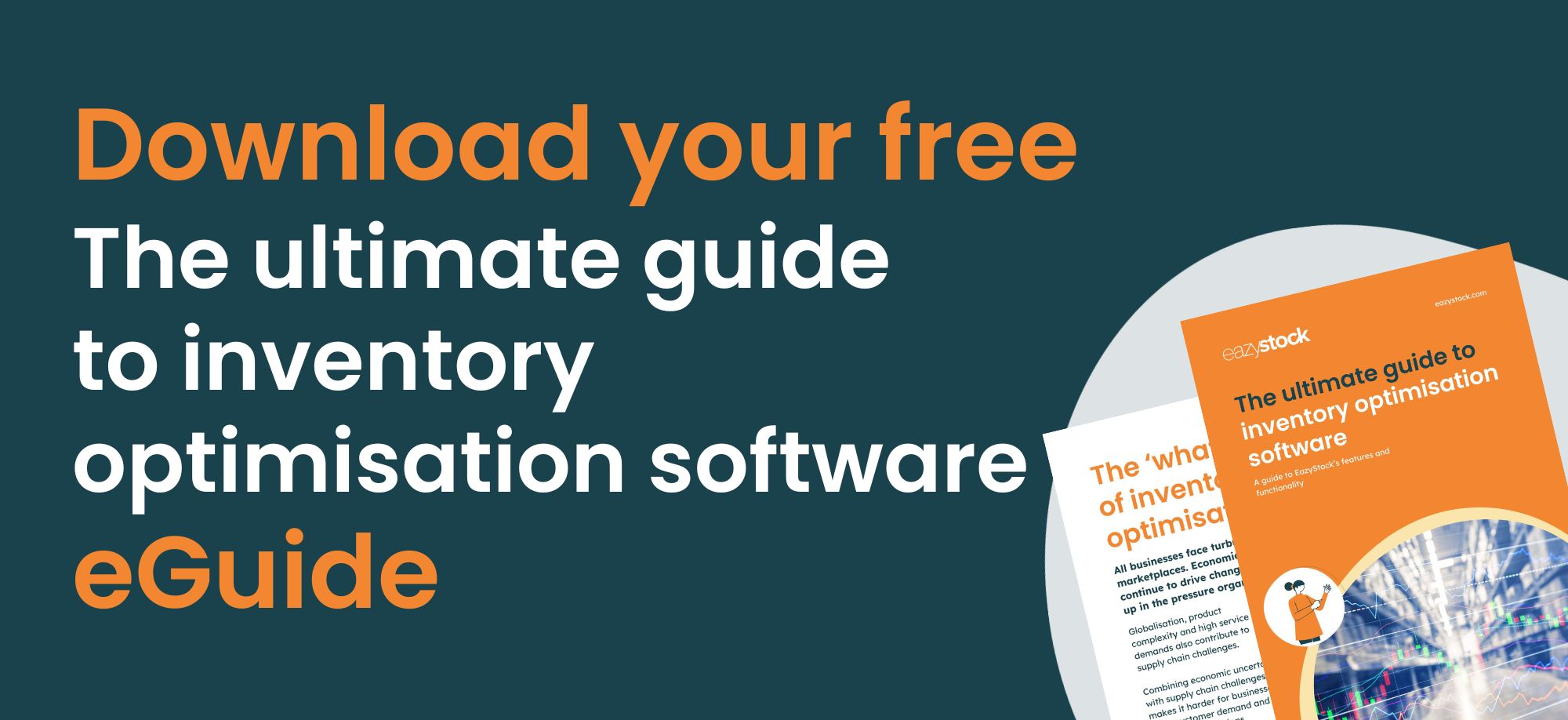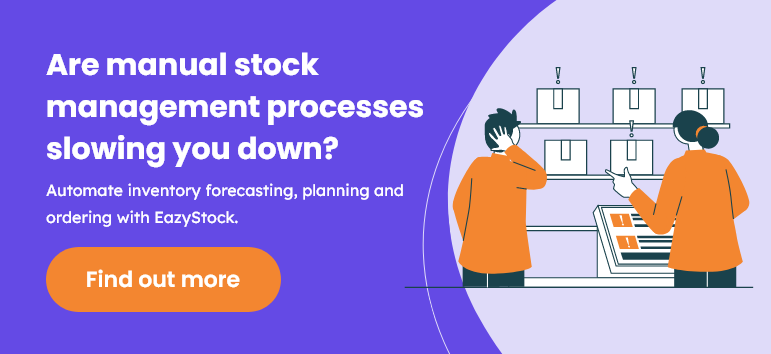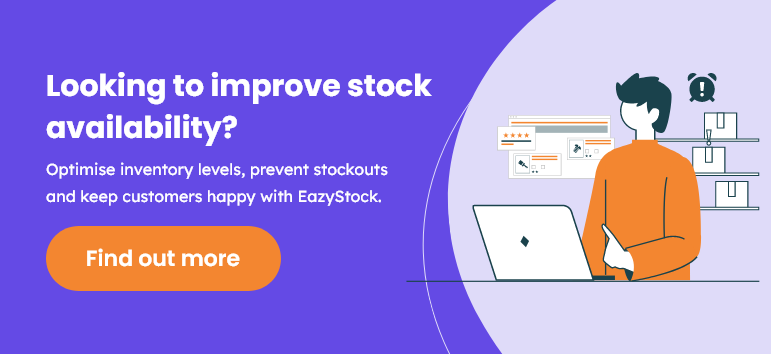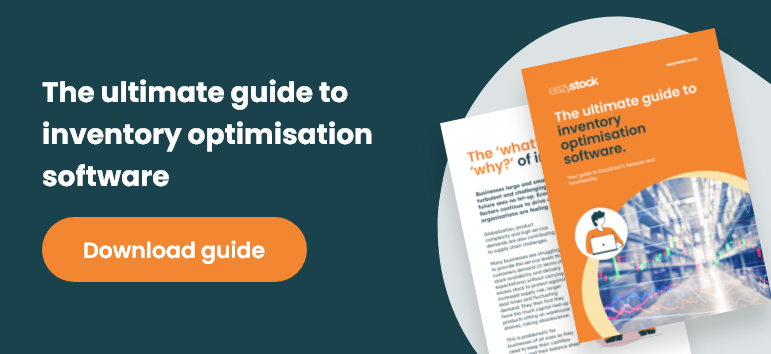ERP inventory management: How advanced is your ERP?
What is an ERP?
Many organisations have an enterprise resource planning (ERP) system to collect, store, manage, and interpret data from various business processes. ERP systems typically allow companies to undertake tasks such as purchasing, production planning, service delivery, and customer management from one single platform.
ERP inventory management
When it comes to inventory management, ERP systems are ideal for tracking stock along the supply chain, monitoring stock levels and order processing.
Businesses will begin to see limitations, however, when they want more sophisticated inventory optimisation solutions. These can include statistical demand forecasting, advanced inventory planning, and replenishment automation. Often, inventory planners will resort to using spreadsheets to carry out such activities, due to the limitations of their ERP inventory management modules. But spreadsheets can be time consuming to set-up and manage, and the risk of error is very high.
Therefore, more businesses are turning to inventory optimisation software to provide such capabilities. To remain competitive, they know they need the tools to ensure the right stock is in the right place at the right time. Can you recognise the warning signs that your business needs automated demand and inventory planning?
Inventory optimisation ERP apps, such as EazyStock, can be easily linked to your ERP system to provide additional, well-needed features. By doing so, they can save you time and money in many ways that you may never have considered.
Here are some of the additional features an ERP inventory management integration may provide:
ERP inventory management needs sophisticated demand forecasting
Some ERP stock management modules offer basic demand forecasting functionality, usually based on linear rolling average calculations. But these simple calculations often lead to inaccurate forecasts, as they rely on future demand following the same patterns as historical demand. In reality, this rarely happens. In comparison, an inventory optimisation app will consider:
Product life cycle:
As an item moves through its product life cycle, its demand pattern will change. For example, at maturity, demand may be stable, whereas nearer the end of its life, demand often becomes very volatile. The approach taken when forecasting demand should, therefore, reflect this. Systems like EazyStock analyse historical demand data to identify ’demand types’ and then use the most effective statistical algorithm to achieve the most accurate demand forecast.
Seasonality:
The demand for seasonal products will obviously rise and fall, so it’s critical to identify demand peaks to capitalise on sales opportunities and spot the troughs to prevent a build-up of stock. An advanced inventory management ERP add-on will identify these seasonal patterns, group products accordingly and add seasonality when forecasts are created.
Trends:
Many items will experience demand trends. Again, inventory optimisation software will identify these trends and account for them when forecasting future demand.
Promotions:
Qualitative information regarding sales promotions, discounts and competitor information can all be added to EazyStock to improve demand forecasting accuracy.
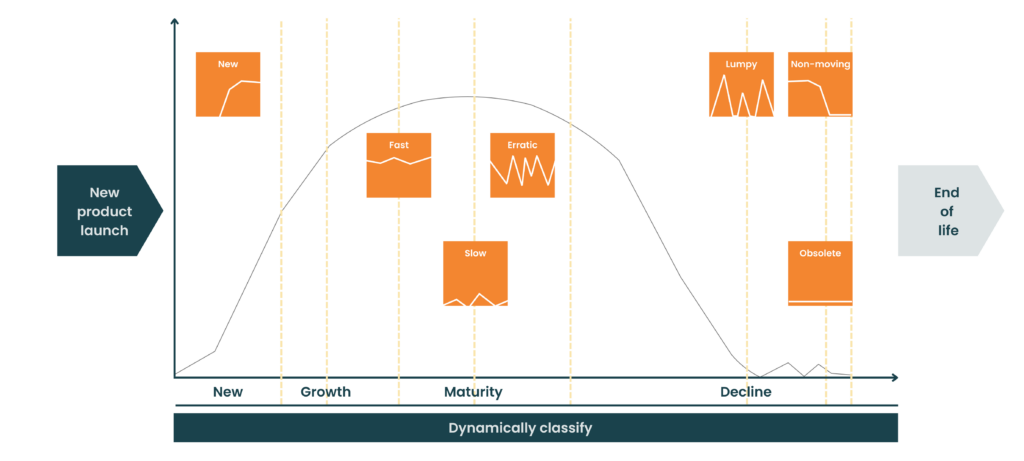
Does your ERP optimise your inventory levels?
A key challenge for many stockholding businesses is lowering their inventory levels without affecting their fulfilment rates or increasing the risk of stockouts.
Many ERP inventory management modules lack the necessary analytical tools to recommend what and how much stock you should actually carry. At best, they offer simplistic inventory classification calculations based on principles such as ABC inventory analysis.
An inventory optimisation app offers advanced inventory classification that categorises stock items based on:
- The value of annual usage (VAU)
- How often each SKU gets picked
- The demand volatility of each SKU

Using these variables, EazyStock creates inventory policy matrixes with varying stock / no-stock rules in each one. These provide a much more detailed level of inventory classification, allowing businesses to make more informed stocking decisions than if they were using a simple ABC classification framework.
By optimising your stock levels, you can improve inventory turnover rates, free up working capital and reduce your carrying costs. At the same time, you’ll be safe in the knowledge that you can meet customer demand, with a low risk of stockouts.
Most inventory optimisation add-ons then set target service levels for each SKU in your portfolio. Service level is an important inventory management key performance indicator (KPI) that shows how well demand is being fulfilled by your available stock.
Critically, the system allows you to find the right balance between the capital you have to invest in stock versus your service level (fulfilment) targets. This allows you to make more informed decisions about the stock you hold and how it will affect your service levels.
Automated replenishment is critical to ERP inventory management
Traditional WMS and ERP inventory management modules often use rules-based methodology to calculate replenishment. This approach can lack the level of sophistication and accuracy required by many businesses. They, therefore, result in manual calculations and spreadsheets that are time-consuming to manage, prone to errors and lack scalability.
A key benefit of EazyStock is its ability to automate replenishment tasks, eliminating a lot of wasted time working out what, when and how much stock to reorder.
EazyStock constantly analyses and evaluates a wide range of market and business variables, such as demand, supplier lead times, current stock levels, stock in transit, and your target service levels. Advanced statistical algorithms then use this data to calculate your replenishment needs, such as your optimal safety stock levels, reorder points, and reorder quantities.

This is a perpetual process so that your ERP always receives optimised replenishment recommendations.
As an EazyStock user, you’ll receive an automated daily list of recommended orders. It’s then your call whether you want to approve every replenishment order or simply manage by exception and only review those that carry the most risk.
With no more spreadsheets, inventory management teams will save time and resources, allowing them to focus on strategic decision-making and value-adding tasks.
How well does your ERP inventory management module manage suppliers?
It can be challenging for organisations to keep track of their suppliers’ lead times and ensure they don’t negatively impact replenishment schedules.
Therefore, EazyStock’s functionality allows you to upload your ‘supplier calendars’, which it can automatically factor into the replenishment calculations for each SKU.
For example, if you only place an order with one particular supplier once a month, EazyStock will adapt your order quantities for all relevant items accordingly. Or, when holidays such as Chinese New Year come around, it will allow for these supply delays and adjust your reorder points and quantities to reduce the risk of stockouts occurring.
Cost-efficient ordering
Your ERP inventory management system will undoubtedly automate the ordering of your stock, but can it ensure you always place the most cost-effective order quantities?
For example, EazyStock can automatically identify items that are most suitable to add to an order to make up minimum order quantities or fill up shipping containers. The result is that you can quickly fill your orders with items that have demand (either now or in the near future) instead of unwanted stock that may end up sitting in the warehouse.
Or, if you have more flexibility with your suppliers, EazyStock can help you determine whether a large order at a lower ‘price per unit’ will actually save you money versus purchasing smaller quantities more frequently.
By always suggesting the most cost-effective purchasing strategy, EazyStock can help you reduce your operational costs, as well as ensure stock availability.
Enhanced ERP inventory management functionality
A simple inventory management ERP add-on can offer a wealth of value-adding functionality. Critically, it can allow you to drive down stock investment while improving service levels and product availability. The benefits, therefore, have implications right across your supply chain.
A key advantage of EazyStock is its quick and easy implementation. As a cloud-based ERP application, it can be linked to your business system very easily. We then configure its parameters to your business’s needs and train your team, so you’re up and running in a matter of weeks.
If you’d like more information on how EazyStock can enhance your ERP’s current inventory management capabilities, please call our team on 0121 312 2992 or contact us here.
